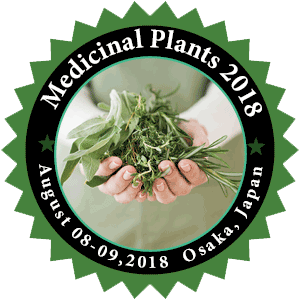
Ahmed Hassanein
Sohag University, Egypt
Title: Protocol to control obstacles retarding the application of tissue culture techniques to improve Moringa oleifera
Biography
Biography: Ahmed Hassanein
Abstract
Despite the great nutritional and therapeutic importance of moringa, expansion of its cultivation needs to improve its ability to withstand various conditions. Artificial methods of plant improvement are based on tissue culture techniques. Thus, the goal of our work was to establish a successful protocol that ensures removal obstacles (vitrification and somaclonal variation) that previously detected during moringa micropropagation. Of all tested explants, media and cytokinin types, cotyledonary nodal segments in contact with cotyledons expressed the highest shoot multiplication, in particular, when they were cultured on MS medium containing 0.56 mg/l BAP. Verification symptoms including chlorosis, retardation of shoot formation and shoot length, necrosis of shoot tips, and formation of friable callus at the base of cultured explants were detected, they were controlled using ant-ethylene compounds (AgNO3, SA and CoCl2). In this work, effect of anti-ethylene compounds on genome stability during long term culture (14 subcultures) using molecular markers (RAPD, ISSR and SSR) was studied for the first time, they indicated that salicylic acid (50 µM) was the best, where it decreased vitrification as well as somaclonal variation. Study the expression of superoxide dismutases, peroxidases, catalases, esterases and glutamate oxaloacetate transaminases indicated that shoot multiplication without somaclonal variation was obtained up to seven subcultures. Among different concentrations of the tested auxins (IAA, NAA and IBA), 0.5 mg/L IAA was best to form roots without callus formation which facilitate acclimatization and transfer plantlets to open conditions. Root formation on auxin containing medium was affected by cytokinin type during shoot multiplication, where microshoots cultured on MS with 0.56 mg/L BAP for shoot multiplication followed by MS with 0.5 IAA for root formation was better than those of 0.56 KIN followed by 0.5 IAA.

